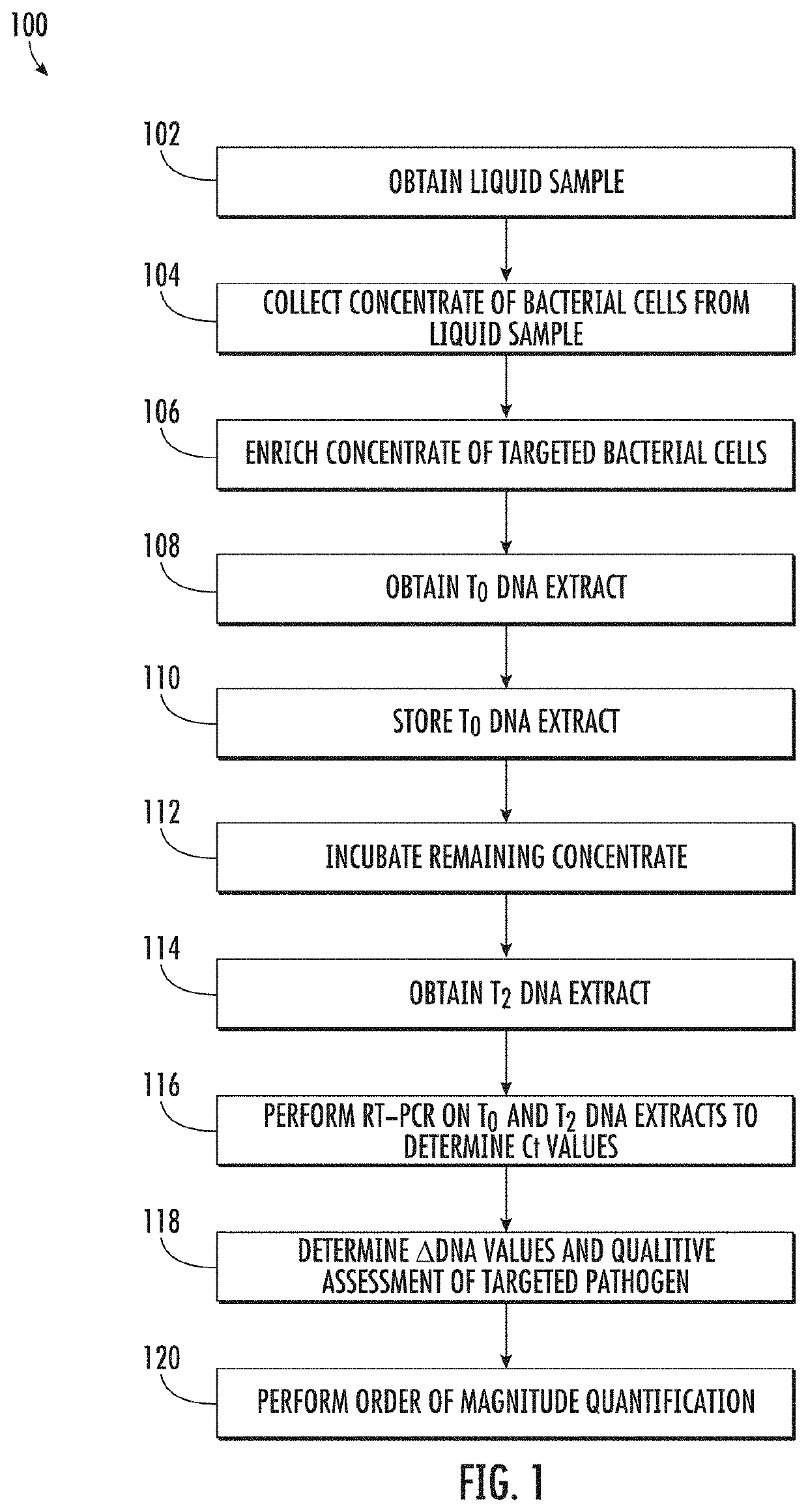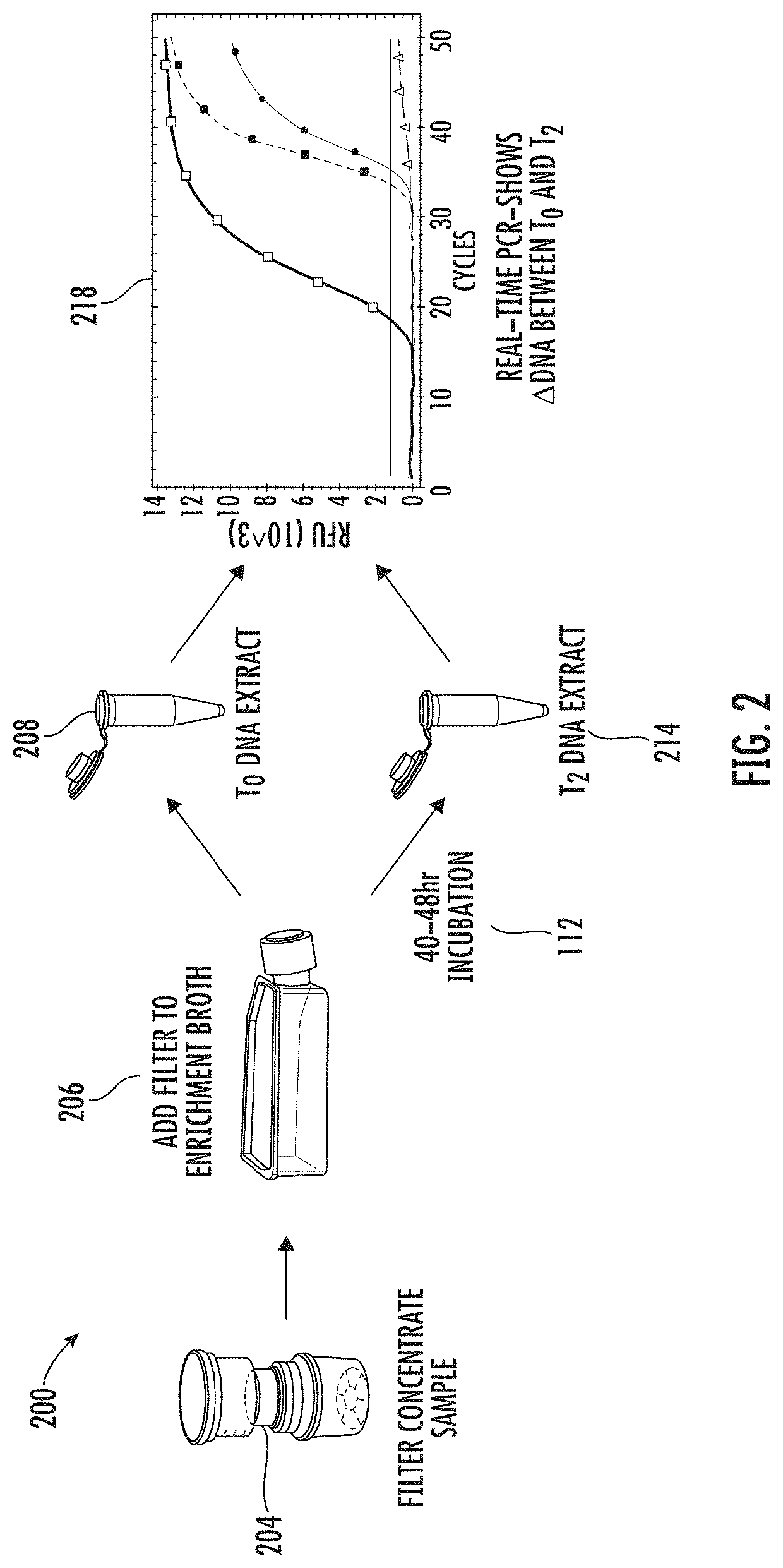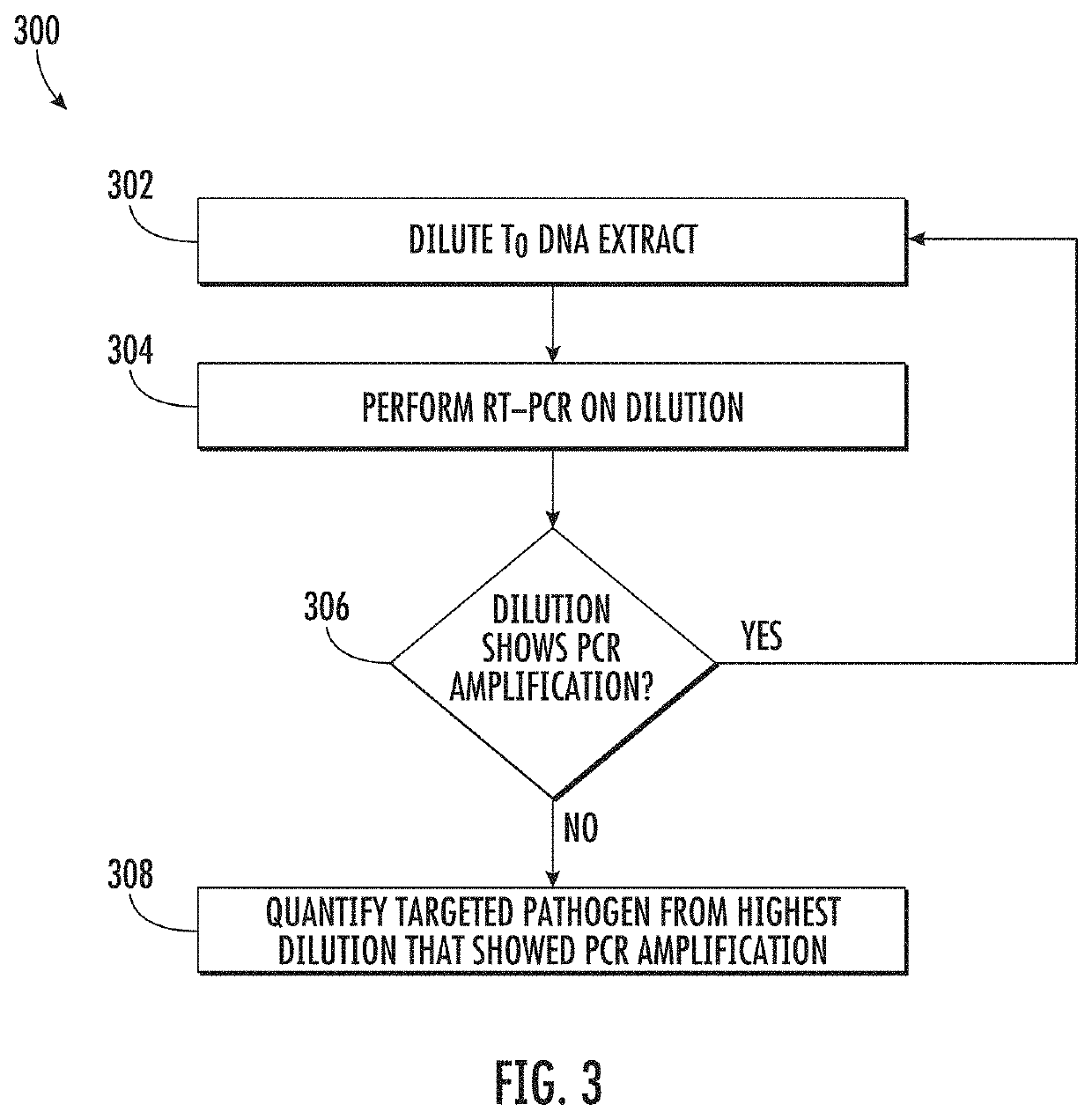Viability detection and quantification assay of waterborne pathogens by enrichment
a technology of viability and quantification assays, applied in the field of performing biological assays, can solve the problems of underestimating the total viable cells of the sample, and affecting the detection accuracy of the sampl
- Summary
- Abstract
- Description
- Claims
- Application Information
AI Technical Summary
Benefits of technology
Problems solved by technology
Method used
Image
Examples
example 1
ure Tests
[0068]The PVT VIABLE protocol was tested on four species of pure culture Legionella including lab strains L. pneumophila (ATCC 33823) and L. longbeachae (ATCC 33462), and environmentally isolated L. micdadei and L. anisa. Cell suspensions of each organism were prepared in sterile phosphate buffered saline (PBS) to an OD600 of 0.05. Then each suspension was serially diluted to 10−3. Next, 10 μl of each dilution was added to 100 ml of PBS to simulate a water sample. Each 100 ml sample was analyzed by the PVTVIABLE protocol.
[0069]FIG. 4 shows the real-time PCR amplification curves for the 10−2 dilution of L. pneumophila analyzed by the PVT VIABLE process. A dilute cell suspension of Legionella pneumophila was made in sterile PBS and analyzed with the PVT VIABLE protocol. DNA was extracted at T0 and T2. The T0 DNA extract was stored at −20° C. to preserve the state of the DNA in the T0 DNA extract until T2 when the extracts were analyzed by real-time PCR. The difference (ΔDNA) ...
example 2
ntal Sample Tests
[0072]PVT VIABLE was tested on 301 environmental water samples. Water samples were collected from multiple building water systems and analyzed with the PVT VIABLE protocol. DNA was extracted at T0 and T2. The T0 DNA extract was kept at −20° C. until T2 when the extracts were analyzed by real-time PCR.
[0073]FIG. 6 shows an example of the real-time PCR amplification curves for one PVT VIABLE positive sample (filled squares—T0, open squares T2, filled circles—positive control, filled triangles—negative control). This sample had a ΔDNA of 3.45 and the sample was also culture positive.
[0074]FIG. 7 shows the spread plate counts corresponding to the real-time PCR data shown in FIG. 6 plated at T0 (A. in FIG. 7) and T2 (B. in FIG. 7). FIG. 7 shows the culture results for this sample increased in CFU / ml from 4 to >300.
TABLE 1PVT-VIABLE Beta Test StatisticsVIABLE+ and Culture+30VIABLE+ and Culture−45VIABLE− and Culture+2VIABLE− and Culture−194Culture+32Culture−239VIABLE+80VIA...
example 3
scitation Experiment
[0078]A side-by-side experiment was designed to show the ability of PVT VIABLE to resuscitate VBNC cells in comparison to resuscitation via co-culture with amoebae, the natural host for Legionella. Twenty-eight potable water samples from a chloraminated water system were analyzed by PVT VIABLE and with amoeba co-culture in three separate experiments. In short, the same collection and preparation as PVT VIABLE was done on the water sample, then the filter membrane was added to a flask containing 10 ml of PYG media and 103 to 104 cells / ml of Acanthamoeba castellanii (a natural host for Legionella). All samples were spread plated at T0 and T2. The same DNA extractions and real-time PCR were performed on the amoeba flasks and the PVT VIABLE flasks. The ΔDNA values for each method were compared. FIG. 8 shows the real-time PCR amplification curves for an environmental water sample analyzed with PVT VIABLE (A. in FIG. 8) and Amoeba co-culture (B. in FIG. 8) (filled squa...
PUM
| Property | Measurement | Unit |
|---|---|---|
| temperature | aaaaa | aaaaa |
| volume | aaaaa | aaaaa |
| diameter | aaaaa | aaaaa |
Abstract
Description
Claims
Application Information
 Login to View More
Login to View More - R&D
- Intellectual Property
- Life Sciences
- Materials
- Tech Scout
- Unparalleled Data Quality
- Higher Quality Content
- 60% Fewer Hallucinations
Browse by: Latest US Patents, China's latest patents, Technical Efficacy Thesaurus, Application Domain, Technology Topic, Popular Technical Reports.
© 2025 PatSnap. All rights reserved.Legal|Privacy policy|Modern Slavery Act Transparency Statement|Sitemap|About US| Contact US: help@patsnap.com



